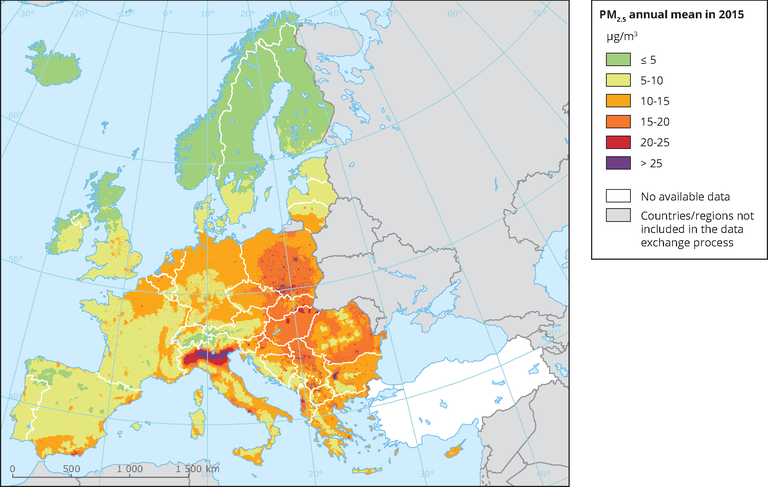
JRC scientists are preparing a dust Reference Material (RM) for air pollution control measurements. They have encountered a number of challenges when using RMs for method validation. This work is relevant for the implementation of the European Air Quality Directive.
The finest particles suspended in air are collectively called PM2,5 and have both anthropogenic and natural origin.
As those particles could penetrate deep in the lungs and may be associated with serious health risks the Air Quality Directive 2008/50/EC established limit values for fine air particulate matter (PM2,5) within the EU Member States.
In assessing compliance with the legislation it is possible to subtract particles coming from natural sources such as sea spray and desert dusts. This is done by measuring specific ions in PM2,5 samples collected at rural background locations.
For guaranteeing the accuracy of these measurements and compliance with the data quality objective of the legislation, control laboratories need to use adequate quality assurance and quality control tools such as Certified Reference Materials (CRMs). Since no CRM of PM2,5 certified for the ions listed in the legislation is available, the JRC pioneered the development of the first PM2,5 reference material to be characterised for water soluble ions. It is intended to certify values for the mass fraction of the anions SO42-, NO3-, Cl- and the cations Na+, K+, NH4+, Ca2+ ,Mg2+.
This reference material project was particularly challenging from a scientific and technical point of view since it was estimated that about 0.5 kg of dust was required to produce the reference material.
If regular air-sampling would have been attempted at a rural site, the material collection alone would have taken hundreds of years to achieve, even using parallel samplers. Instead an innovative process was developed that allowed the production of enough PM2,5 in two months and at the same time ensuring that the dust prepared in this way behaves like dust collected on filters when extracted prior to analysis.
JRC scientists have recently identified and described the challenges when using a novel approach to producing a PM2,5-like material, starting from tunnel dust.
Three different routes to produce a PM2,5-like material were investigated:
The first route consisted in milling of a PM10-like material, but resulted in still too coarse particles. In the two other routes, particle size reduction was achieved by liquid sedimentation of the larger particle fraction of the PM10-like material. Additionally, the material was spiked with the desired ions at the appropriate levels. Afterwards two different methods for drying the suspension were tested, spray drying and freeze drying after shock freezing of droplets. Only the latter technique resulted in appropriate particle sizes with the desired content of the different ions, which also showed a similar behaviour in the analytical process, i.e. sufficient commutability.
During the feasibility studies of this reference material and particularly with the material type that was further jet-milled to achieve smaller particle sizes, commutability issues were found.
Commutability is a property of CRMs that describes the comparable behaviour of the CRM and routine samples in the analytical process.
While commutability is always studied when developing clinical CRMs, it is not commonly a concern for inorganic analysis. However, differences in the chemical behaviour were found between PM2,5 collected from polluted air and particulates produced in the laboratory for development of the CRM. Hereby it was demonstrated for the first time that commutability studies are sometimes also necessary for analysis of inorganic compounds, e.g. from the environment.
This JRC work supports the implementation of the European Air Quality Directive 2008/50/EC and moreover Member States in their control of fine air particulate matters.
Read more in:
- J. Charoud-Got et al.: Preparation of a PM2.5-like reference material in sufficient quantities for accurate monitoring of anions and cations in fine atmospheric dust, Anal Bioanal Chem (2017) 409: 7121, doi: 10.1007/s00216-017-0670-6 G.
- Emma et al.:Feasibility study of a candidate reference material for ions in PM2.5: does commutability matter also for inorganic matrices? Anal Bioanal Chem (2018) 410: 6001, doi: 10.1007/s00216-018-1220-6
Related Content
Details
- Publication date
- 8 February 2019
